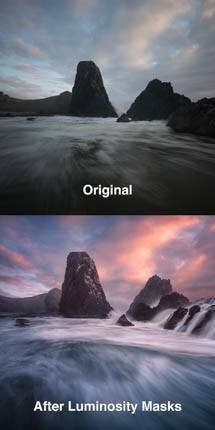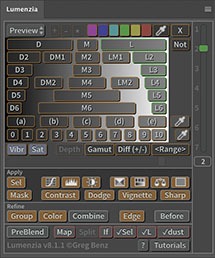You know how buildings lean into the center of your image when you shoot with the camera pointing up? This is known as “converging verticals” or the “keystone effect”. It’s a type of image distortion that is caused by the angle of your camera’s sensor relative to your subject. Sometimes, it’s no big deal. But in architectural images or cityscapes, where there are obvious lines that should be straight/parallel, straightening these lines can take your image to a whole new level. Fortunately, it’s very easy to fix this issue, and I’ll show you how in the video below. Additionally, I’ve posted a description of other techniques you can use to prevent or correct distorted vertical lines to get beautifully straight images.
And these techniques aren’t just useful for buildings. All images show converging verticals when you point the camera up, you may have just not noticed. You might be surprised how much your images improve when you try correcting the perspective.
Straightening in camera
It’s great that we can fix converging verticals in post, but there are good reasons to get it right in the camera. Any time you stretch pixels, you are loosing some quality as well as cropping out part of the image. There are several strategies you can use to get things right in camera:
- Shoot with the camera’s sensor plane parallel to the surface in question. For converging verticals, this means shooting with the camera perfectly level. For converging horizontals, this means shooting with the lens pointed directly at the primary face of the subject. This may mean using a different crop/composition, or shooting from a different location. One way to achieve this, or at least get closer to level, is to step further back from your subject and use a longer lens. This will change the relative size of foreground/background elements, so be careful not to lose the intimacy and mood of the shoot simply to get a technically correct vertical line.
- Shoot with a “tilt-shift” lens. I use all of Nikon’s “PC-E” lenses and love them, especially the 24 and 45mm. Canon users are lucky, as Canon also offers a 17mm tilt-shift lens (I really wish Nikon had one). These lenses are expensive and manual-focus only, but they are often the best or only way to get straight lines in the camera. These lenses have the added benefit of being extremely sharp in the corners (unless you have to shift too far), which is often a nice plus. To use one, level your camera, and then shift the lens up to get the framing you want for your subject. As long as your camera is level, the vertical lines will be perfectly straight.
- Of course, another strategy is simply to enhance the effect. Sometimes this can make an image more dramatic. Or, if some degree of slant is inevitable, it may be better to make it look deliberate than to leave it on the fuzzy edge of straight and slanted.
Other options to straighten with post-processing
The technique I show in the video above is my go-to technique for significant corrections, but there are some other great options.
- Lens corrections tool in Lightroom / Photoshop. I use this to some degree on nearly all my images. For simple images, this may be all I need. For more complex images, I may use this to get a better starting point before using the Photoshop techniques I showed above. Within lens corrections, I check “enable profile corrections” on many images to get rid of lens distortion. Then I use automatic vertical or manual vertical transformation tools to deal with the converging verticals. See this video from the amazing Julieanne Kost for a demo of how to use the lens corrections tool.
- Adaptive Wide Angle in Photoshop (found under the Filter menu). This is a great tool for both images shot with wide angle lenses as well as panoramas that were stitched in Photoshop. It allows a great degree of custom control. It’s much trickier to use than the techniques I show above, but can be a good solution for some complex situations (especially where there is lens distortion on top of converging verticals).
- Warp tool in Photoshop (see Edit/Transform/Warp). I like using this approach when I want to correct something in the middle of the image, without cropping out material from the edges.

